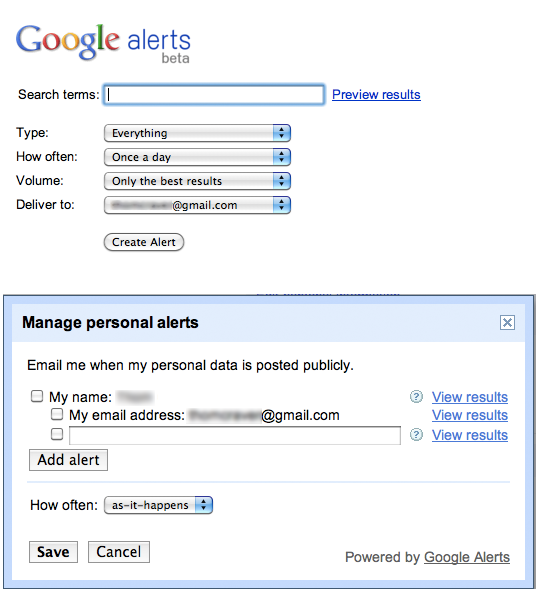Google announced a new feature to help “manage what people see” when you’re searched for on Google. This new feature, called Me on the Web is really nothing more than Google Alerts in disguise. It is literally in disguise because the interface to adding alerts is different in the Me on the Web section of the Dashboard than it is in the normal Google Alerts interface.
I’m not sure I understand. I already use Google Alerts to track myself with Alerts. (And you should, too!) So why do I need it in a different place. I mean it’s not like the Google Alerts section of the Dashboard is more than two sections down from Me on the Web; less than 100 pixels away. That is, of course, if I forget the difficult URL of google.com/alerts. So what’s the real deal?
The rest of Me on the Web section is only a few links to how to manage your identity online. So how do you manage your identity online? According to Google, search for yourself. Then create a Google profile. What? Seriously?
You can’t actually use Me on the Web unless you have a Google profile. Convenient, no? (But you certainly can use Google Alerts!)
You know what other Google feature you can’t use without a profile? Google’s +1 button. And it makes sense; think about it. A +1 is, essentially, a “like.” Who likes it? Well, no one if there is no profile to go along with it.
The +1 button was a hot topic at SES Toronto recently. It was brought up in the SEO is Dead, Long Live SEO panel and in the Panda-pocalypse panel. In each, it was argued that the +1 button means nothing if there’s no buy-in from Google’s user base. I further conjecture it means nothing without actual human information, too. So what, then? Now Google needs you to get a profile. You’ve seen the commercials. They’re all about building a desire in you to “go Google” in hopes you’ll get a profile.
You can try to have social, but you can’t have a “network” without people. Whether or not Google Circles (or whatever it may be called) actually comes to fruition as a full-fledged social network, they need user acceptance. Google isn’t just coming out and saying they’re building a competing product and you should join. It truly appears they are trying to find other ways to make you join under a different guise. Once critical mass is obtained, then they can release the service that will bind all their existing social features together. Sneaky, no?

